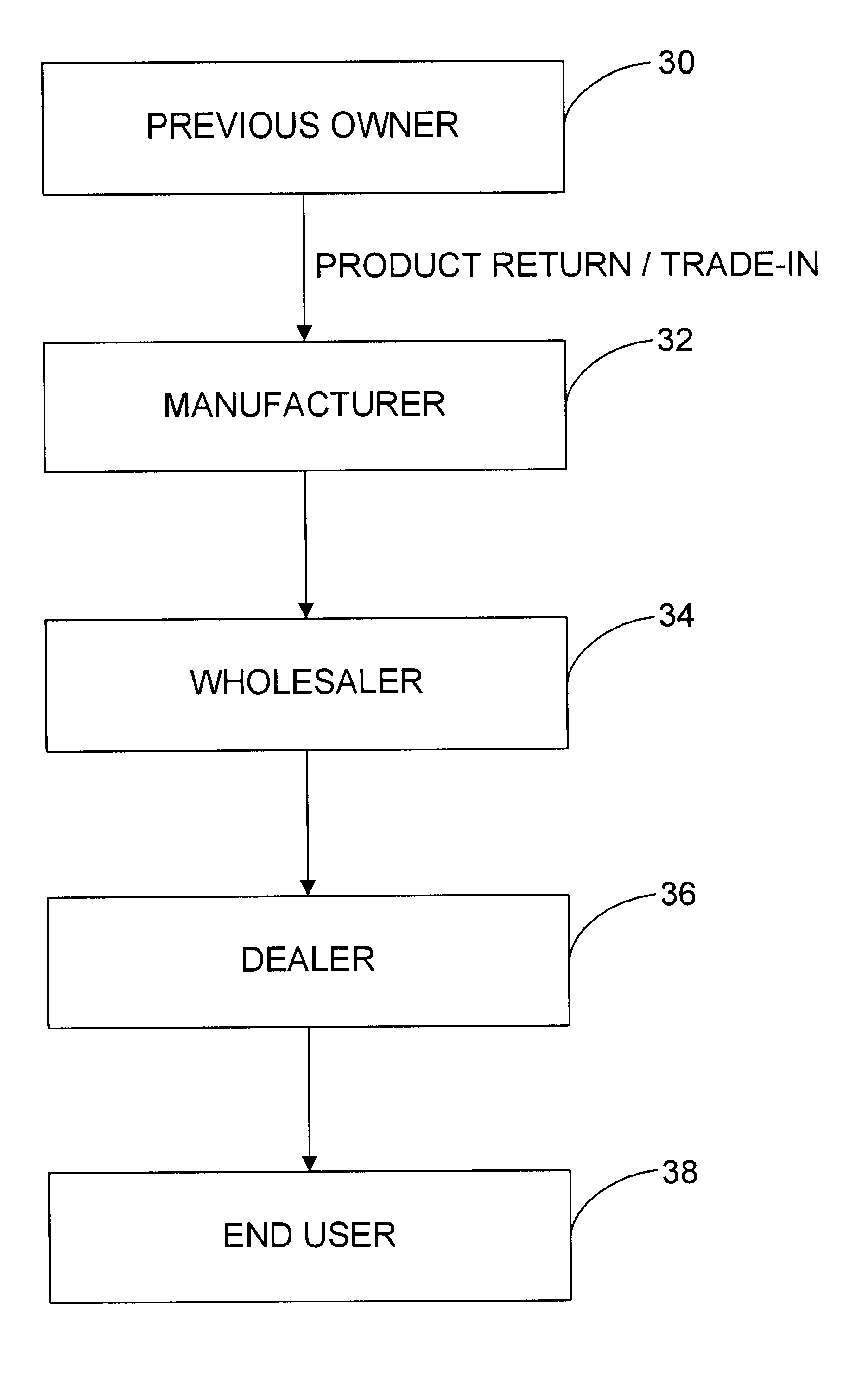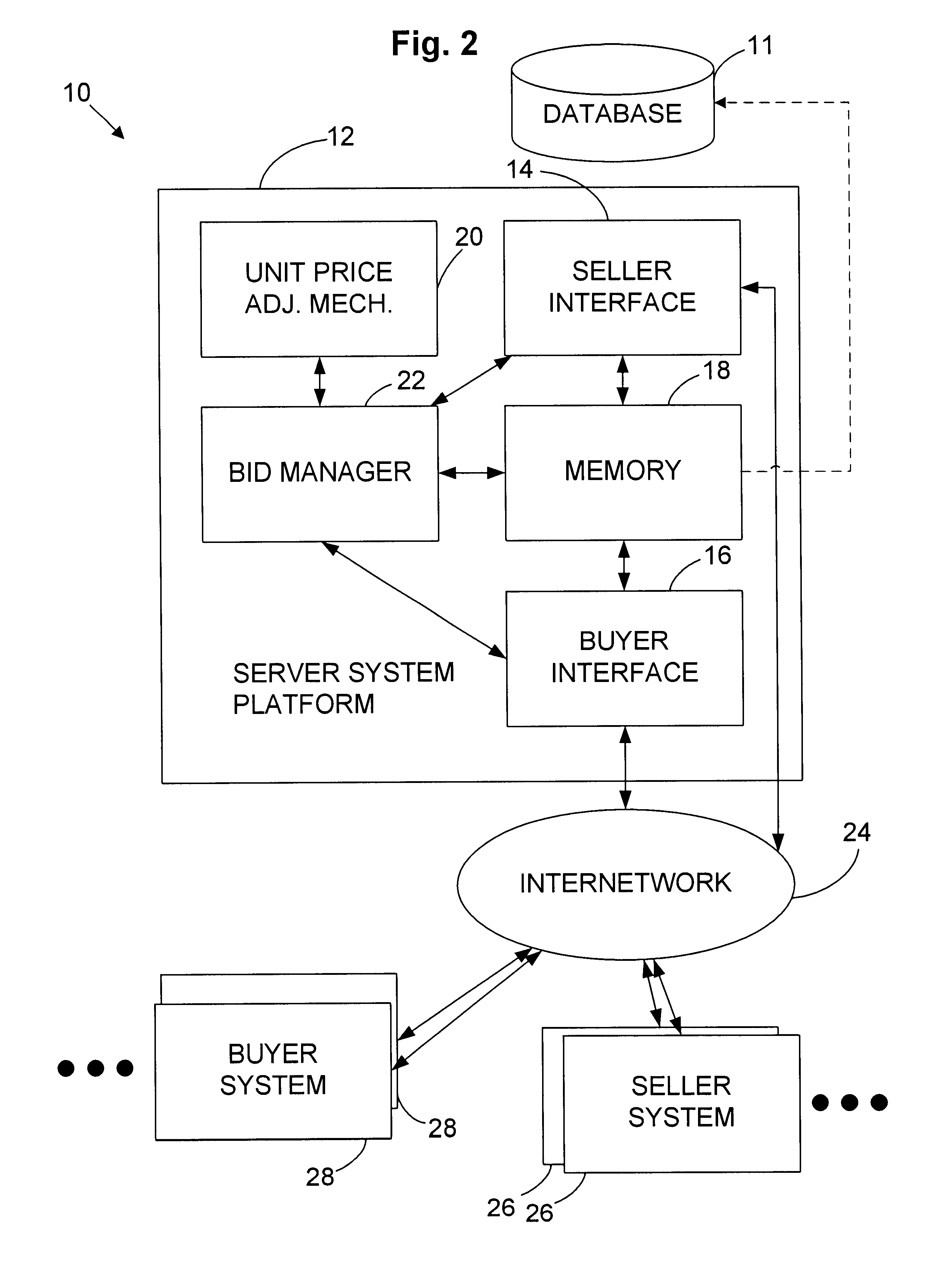On-line auction method and system facilitating the sale of multiple product units at prices varying with volume
a technology of multiple product units and auction methods, applied in the field of online auctions, can solve the problems of limiting the ease with which buyers and sellers will be able to meet, certain inefficiencies, and limiting the selection of products auctioned, and achieves the effects of reducing the transaction cost, simple, and reducing the difficulty of auctioning
- Summary
- Abstract
- Description
- Claims
- Application Information
AI Technical Summary
Benefits of technology
Problems solved by technology
Method used
Image
Examples
first embodiment
[0063]The splitting factor is a seller-defined parameter used with a pricing algorithm to quantify the unit cost increase to be applied to split lots. For example, FIG. 3 illustrates a first embodiment seller screen in which a seller has determined that the price of splitting a lot into sublot quantities and selling in such sublots (rather than selling the whole lot) is $50.00 per split. This factor is easily converted to a maximum parity unit price (P). The maximum parity unit price is the parity unit price for the purchase of the minimum sublot quantity. It is by definition higher than the reserve unit price, which is the price that is paid for buying the complete lot. Both of these values may be utilized to calculate a parity unit price curve in accordance with a given algorithm. Various embodiments are depicted below for implementing such an algorithm. Such calculations are performed, in the illustrated embodiment, by the unit price adjustment mechanism 20 of the online bidding ...
second embodiment
[0064]FIG. 4 shows a seller screen, where the seller does not need to specify the splitting factor. Rather, the seller identifies the minimum unit price for both the total quantity and the minimum sublot quantity. The illustrated second seller screen 40b comprises, as was the case with the screen showing FIG. 3, a column of legends 42b, and corresponding records, including unit description records 44b and bid parameters 46b.
[0065]In the embodiment shown in FIG. 4, the seller does not need to specify the splitting factor or pricing algorithm used to determine the sublot unit price. Rather, the seller specifies the reserve unit price to start the bidding for each available sublot quantity. As with the preceding approach, the reserve unit price will increase as the sublot quantity decreases. This method allows a seller to run several simultaneous independent auctions for different sublot quantities. The specified reserve unit price must be bid for a sublot quantity in order to open th...
third embodiment
[0066]FIG. 5 shows a seller screen 40c, which comprises a column of legends 42c, with corresponding unit description information 44c and bid parameters 46c. This embodiment utilizes a larger selection of bid parameters 46c.
[0067]FIG. 5 requires that additional information be provided by the seller as compared with the embodiments illustrated in FIGS. 3 and 4. That information includes such information as the total lot quantity, reserve price, reserve unit price, bid increment, the minimum sublot quantity, and the maximum parity price corresponding to the minimum sublot quantity. In addition, the seller may input a plurality of sublot quantity sizes and corresponding reserve unit prices. In the embodiment illustrated in FIG. 5, up to 3 sublot quantities may be input in addition to the minimum sublot quantity. In addition, the seller can indicate the bidding period by specifying an auction start date / time and auction close date / time.
[0068]The bid manager 22 will compare different bid...
PUM
 Login to View More
Login to View More Abstract
Description
Claims
Application Information
 Login to View More
Login to View More - R&D
- Intellectual Property
- Life Sciences
- Materials
- Tech Scout
- Unparalleled Data Quality
- Higher Quality Content
- 60% Fewer Hallucinations
Browse by: Latest US Patents, China's latest patents, Technical Efficacy Thesaurus, Application Domain, Technology Topic, Popular Technical Reports.
© 2025 PatSnap. All rights reserved.Legal|Privacy policy|Modern Slavery Act Transparency Statement|Sitemap|About US| Contact US: help@patsnap.com



